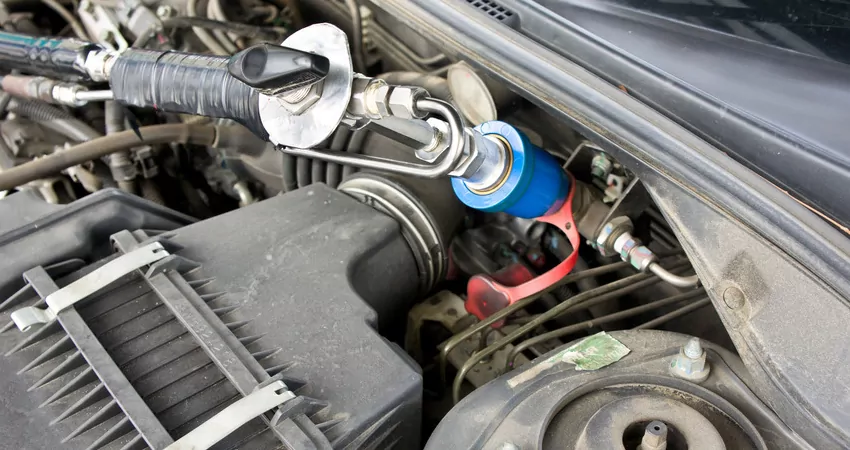Ground-level ozone is a growing problem in many cities, especially on the US west coast. As noted by the EPA, it causes respiratory problems like throat irritation, tightness in the chest, and increased occurrence of asthma attacks. That’s why, on October 1st2015, the National Ambient Air Quality Standard was lowered from 75 to 70 ppbn. This has implications for the fuel burnt in automobile and truck engines, and supports increased use of compressed natural gas (CNG.) CNG for vehicles is delivered through specially-designed filling stations, which are good applications for ChemTec flow monitors and excess flow valves.
NOx, Ozone and CNG
Burning gasoline and diesel releases nitrogen oxide (NOx) into the atmosphere. Sunlight breaks these down with the oxygen atoms recombining as ozone. The actual chemical reactions are complex and depend on both the level of NOx in the air and the presence of volatile organic compounds (VOC’s). Note also that automobiles are not the only culprit: power plants and livestock also contribute NOx emissions.
CNG combustion releases less NOx than that of gasoline or diesel. Gasoline engines can be readily converted to run on CNG, so a switch to this fuel type will help lower ozone levels. According to the Department of Energy, there are currently nearly 900 CNG filling stations around the country. If more vehicles are converted to help meet the lower ozone standard that number will almost certainly rise.
How Filling Stations Operate
Two possible methods of CNG refueling are “fast-fill” and “time-fill.” Fast-fill is very much like gasoline refueling. A vehicle pulls up to a pump and CNG is transferred at high speed, filling the tank in about the same time as is needed for gasoline. In contrast, time-fill is more analogous to recharging an electric vehicle: the vehicle is left connected to the filling system overnight and the tank fills slowly. While this approach is suitable for some commercial fleet applications, most vehicles use the fast-fill approach.
In a fast-fill refueling station natural gas comes in from the utility, is dried, filtered, compressed and then stored. Drying is needed because most natural gas contains some water. If not removed this can cause corrosion and blockages throughout the system. A common method of drying natural gas is with molecular sieve adsorbent desiccants, which need periodic regeneration.
Our Contribution
Flow monitors and excess flow valves are ideal for ensuring safe operation of a CNG filling station. ChemTec flow monitors use a magnetic piston suspended in the fluid stream and a sensor that detects any deviation from the normal operating position. This can trigger an alarm if gas flow is either too high or too low, both of which would affect dryer operation.
Widely used in gas supply systems, an excess flow valve shuts off fluid flow if a sudden increase is detected. This would protect a CNG filling station from a pipe rupture or abrupt disconnection.
Safeguarding fluid delivery
ChemTec designs and manufactures flow monitors and excess flow valves for a wide variety of applications. If you’re interested in learning how to protect any kind of fluid handling system, contact us today.

